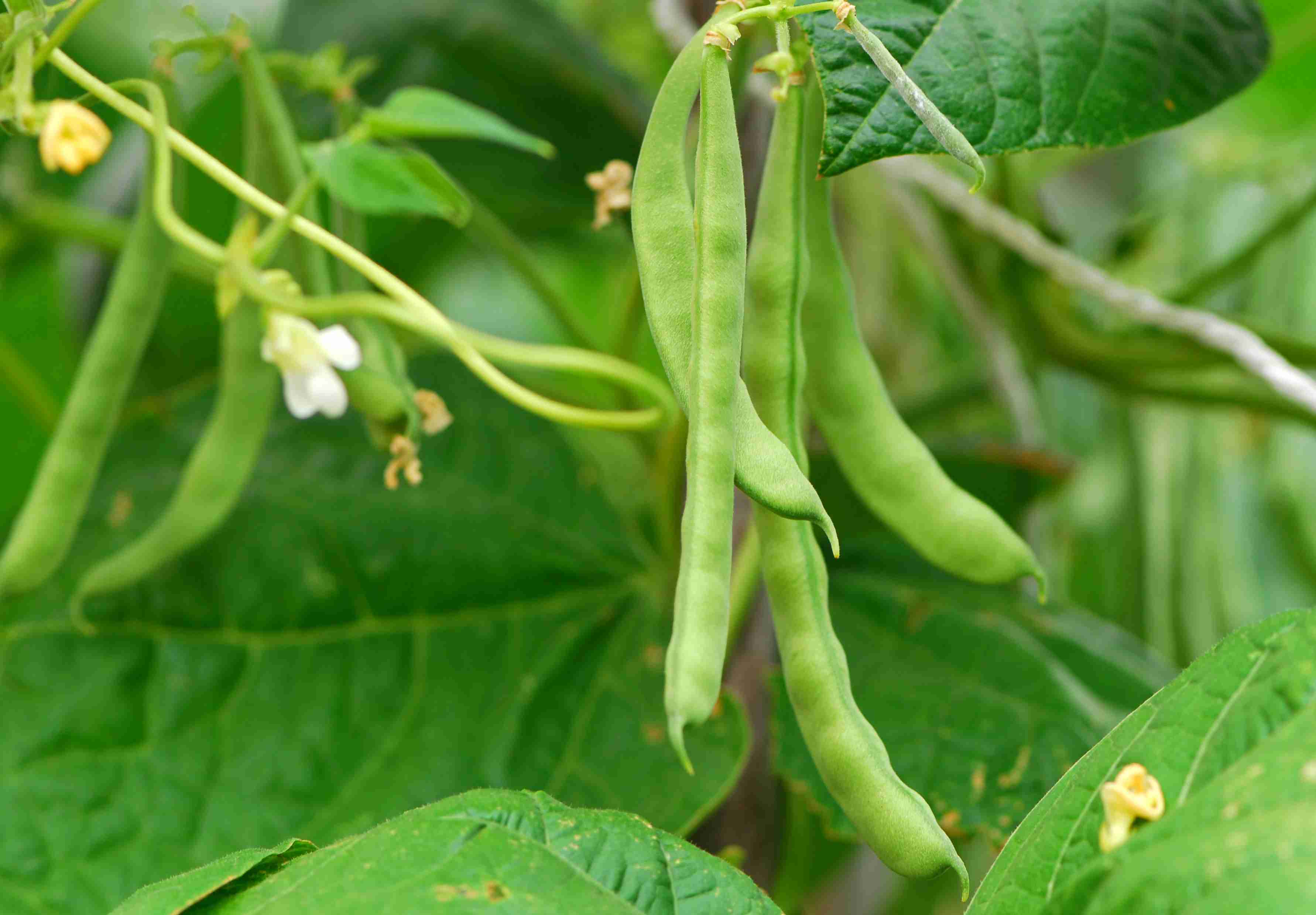
Green Bean
Phaseolus vulgaris
Basic Information
🌿 Family: Fabaceae🗺️ Zone: 3-10
Other Names:
- Snap Bean
- String Bean
- French Bean
🌡️ Ideal Temperature : 60°F – 85°F
🔥 Heat Tolerance: Up to 95°F
❄️ Cold Tolerance: Down to 32°F
🌱 Type: Annual
Layers
- Herbaceous
Functions
- Edible
- Nitrogen Fixer
- Pollinator
- Ground Cover
Pests
No pests associated with this plant.
Description
Green beans are fast-growing annual legumes that can be either bush or pole varieties. They produce long, slender pods that are harvested before the seeds inside mature. The plants have trifoliate leaves and small, white to purple flowers that develop into edible pods. Bush varieties grow up to 60 cm (2 feet) tall, while pole beans require trellises and can reach 2-3 meters (6-10 feet). They thrive in well-drained soil and warm temperatures.
🌞💧 Sun and Water Requirements:
Green beans require full sun, with at least 6-8 hours of direct sunlight daily. They prefer moist, well-draining soil with regular watering, but excessive moisture can lead to fungal diseases.
✂️🫘 Methods to Propagate:
Green beans are grown from seeds. Sow seeds directly into the soil 2.5 cm (1 inch) deep, spaced 10-15 cm (4-6 inches) apart for bush beans and 20 cm (8 inches) apart for pole beans. Germination occurs within 7-10 days in warm soil.
🧑🌾👩🌾 When to Harvest:
Green beans are typically ready to harvest within 50-65 days. Harvest the pods when they are firm but before the seeds inside fully develop. Frequent harvesting encourages continuous production.
Purpose
- **Edible:** Green beans are a rich source of fiber, vitamins, and minerals, and can be eaten fresh, steamed, or cooked.
- **Nitrogen Fixer:** As a legume, green beans fix nitrogen in the soil, improving fertility for companion plants.
- **Pollinator:** The flowers attract bees and other pollinators, enhancing garden biodiversity.
- **Ground Cover:** Bush varieties provide ground cover, suppressing weeds and helping retain soil moisture.